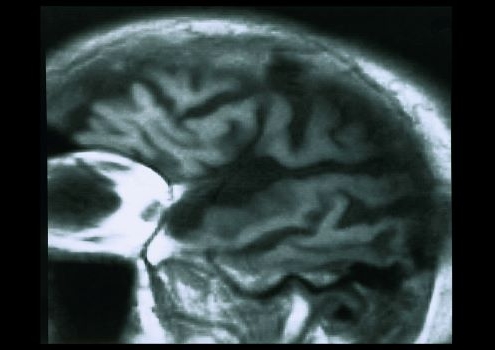Alzheimer’s Association Annual Meeting Starts with Plenty of Exciting Data
Alzheimer’s Association Annual Meeting Starts with Plenty of Exciting Data
Today is the first day of the Alzheimer’s Association International Conference 2021 (AAIC), behind held both virtually and in person in Denver, Colorado. Here’s a look at some of today’s stories.
Cognito Therapeutics’ Gamma Frequency Neuro-Modulation
Cognito Therapeutics presented new clinical data from its lead digital therapeutic candidate in Alzheimer’s disease. This included data on gamma frequency neuro-modulation on cognitive function, which demonstrated improvements in sleep, improvements in memory and cognition, and decreased brain atrophy and volumetric loss. This was part of six poster presentations.
The Phase II OVERTURE study was a prospective six-month study in mild-to-moderate AD, and demonstrated that the gamma frequency neuro-modulation caused significant reduction in brain atrophy.
“Our results presented at AAIC 2021 demonstrate that our unique neurophysiological medicine approach can affect disease modification by improving memory, cognition and functional symptoms while also reducing brain atrophy, the brain volume loss seen with Alzheimer’s progression,” said Brent Vaughan, Cognito’s chief executive officer. “The improvements we have now reported in nighttime sleep for patients with Alzheimer’s, provide further support for our mechanism of disease modification in this patient population. This is a significant milestone, and we look forward to expanding upon our clinical validation in our pivotal study in Alzheimer’s disease.”
INmune Bio Announced Phase II Alzheimer’s Trial Design
INmune Bio announced the design of its upcoming Phase II trial of XPro in patients with mild Alzheimer’s disease. The announcement came with the release of additional biomarker data from the Phase Ib AD trial that demonstrated improvement in white matter (myelinated axons) that degenerate in AD patients. XPro or Xpro1595 is a next-generation inhibitor of tumor necrosis factor (TNF) that uses a dominant-negative TNF technology. Pegipanermin neutralizes soluble NTF without affecting trans-membrane TNF or TNF receptors.
“This is the first time in my career that I have seen positive changes, and in such a short time frame. This is truly exciting,” said Maxime Descoteaux, chief scientific officer at Imeka Solutions, the imaging Contract Research Organization (CRO) that is handling white matter imaging. “Apparent fiber density decreases with axonal degeneration, and this is always seen in Alzheimer’s disease patients. To see AFD increase with a therapeutic in only three months is unprecedented, especially since AFD increases the most in the locations most severely affected by Alzheimer’s pathology.”
Improved Air Quality Decreases Dementia Risk
Multiple studies were presented linking long-term air pollution exposure with accumulation of brain plaques in Alzheimer’s disease. One study suggested that reducing fine particulate matter and traffic-related pollutants per 10% of the EPA’s current standard over 10 years was connected with 14% and 26% decreases in dementia risk, and slower cognitive decline in older U.S. women. A decrease of fine particular matter over 10 years was tied to a decreased risk of all-cause dementia in French individuals and by 15% and of Alzheimer’s disease by 17% for every microgram of gaseous pollutant per cubic meter of air decrease in fine particular matter. And long-term exposure to air pollution was linked with higher beta-amyloid levels in the blood in a large U.S. cohort.
Cortexyme’s Atuzaginstat Shows Promise in P. Gingivalis-Related Alzheimer’s
Cortexyme presented preclinical data linking P. gingivalis to increased levels of phosphor-tau217, an emerging biomarker for Alzheimer’s disease. This research, as well as new baseline data from its pivotal GAIN Trial, was presented at the meeting. The Phase II/III GAIN Trial is a potentially pivotal study in 643 patients with mild to moderate Alzheimer’s. The company’s various trials and preclinical studies have suggested that the intracellular pathogen, P. gingivalis, is identified in the brain of more than 90% of Alzheimer’s patients. Also, an oral infection of P. gingivalis in laboratory animals results in brain infiltration and downstream hallmark Alzheimer’s pathologies. The company’s drug candidate, atuzaginstat, is a first-in-class, oral, brain penetrant small molecule targeting P. gingivalis.
Cassava Announced Positive Data from Simufilam Phase II Trial
Cassava Sciences announced positive clinical data with SavaDx, an investigational diagnostic/biomarker to detect Alzheimer’s disease with a blood test. The SavaDx test measured plasma levels of altered filamin A before and after simufilam treatment in Alzheimer’s patients. In the Phase IIb trial, simufilam significantly decreased plasma levels of altered filamin A. Plasma levels of p-tau181 also decreased significantly.
“We believe altered filamin A is a major culprit in Alzheimer’s disease,” said Remi Barbier, president and chief executive officer of Cassava. “Before simufilam treatment, SavaDx detected high plasma levels of altered filamin A in patients. After simulfilam treatment, levels dropped significantly. We believe these data provide clear evidence that simufailm binds to and engages its intended target to produce treatment effects.”
BioSpace source:




